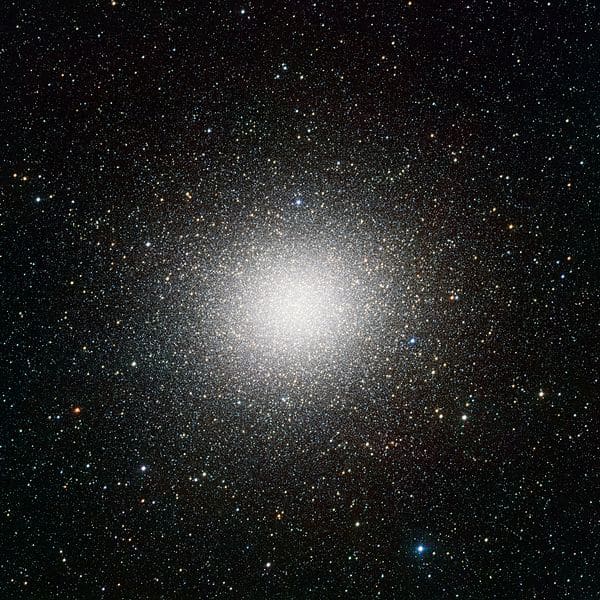Harlow Shapley: An American Astronomer Who Measured the Galaxy
Who Was Harlow Shapley?
Harlow Shapley secured his place in the pages of the astronomy history books by estimating the size and dimensions of the Milky Way galaxy correctly. He used the position of the sun within the Milky Way and the RR Lyrae variable stars to come up with an accurate measurement. This significant discovery also discredited the pervading beliefs about the Earth and the Sun’s location in the galaxy.
Harlow Shapley was the first person to determine Earth’s actual place in the galaxy. This remarkable discovery, which was the result of painstaking calculations and detailed observations, has often been likened in importance to the discovery that the planet Earth in fact orbits the Sun, instead of the other way around.
Shapley received many awards and recognition during his lifetime, and he continued to contribute until he reached advanced age. He remained active in the scientific circuit even in his 70s, and he only stopped giving lecture tours when his strength started to fail him in his 80s. Harlow Shapley died on October 20, 1972, in Boulder, Colorado, in a nursing home.
Growing Up in Missouri
Harlow Shapley was born on November 2, 1885, in Nashville, Missouri. His father, Willis Shapley, was a farmer who provided for his family. His mother was Sarah Stowell Shapley, who was a schoolteacher. He was born to a simple life in a farmhouse. Harlow had a twin brother named Horace and a younger brother named John.
Harlow dropped out of school after reaching the equivalent of a fifth grade education at a rural school nearby. Afterward, he studied at home, read extensively at the local library, and worked at the local newspaper, the Daily Sun. He worked as a police reporter in Joplin, Missouri before enrolling in a high school program to continue his education. The academic program was designed to be completed in six years, but Harlow graduated class valedictorian after fulfilling all the coursework and requirements in a mere two years.
Personal Life
On April 15, 1914, Harlow Shapley married Martha Betz. The couple met in Missouri in a mathematics class. Aside from being husband and wife, the two collaborated on several scientific papers, complementing each other’s scientific pursuits. Martha assisted her husband in the work that he did at the Mount Wilson Observatory and the Harvard College Observatory. Martha Betz Shapley devoted her own studies to eclipsing binaries and became a respected authority on the subject. She also studied other astronomical objects in her long career. Martha Shapley passed away in 1981.
Harlow and Martha produced five children—four sons and one daughter. One of Harlow Shapley’s sons, Lloyd Shapley became a world-renowned mathematician and economist. Lloyd Shapley, now in his nineties, was awarded the Sveriges Riksbank Nobel Memorial Prize in Economic Sciences (Nobel Prize in Economics) in 2012.
Higher Education
When Harlow was 22 years old, he entered the University of Missouri as a journalism undergraduate. However, the School of Journalism would not be opening until the next school year. While referring to the course directory, he decided to study Astronomy, one of the first subjects that he came across. He has been fascinated with science every since he was young. Archaeology was written before it on the list of topics, but Shapley did not consider the subject because he could not pronounce the word properly. Shapley ended up abandoning a potential career in journalism for one in science. It was a fortuitous choice, one that benefited the scientific community and humanity in general.
During his fellowship at Princeton University, Harlow Shapley was a post-graduate student under Henry Norris Russell. From 1914 to 1919, Shapley and other astronomers used the Mount Wilson Observatory 60-inch reflecting telescope. This facility in California housed the largest telescope in the world at that time. He produced significant work as a post-graduate student, particularly in providing scientific evidence that Cepheid variable stars behaved more like pulsators than spectroscopic binaries.
During his stay at Princeton, he chose eclipsing binary stars as the topic of his doctoral dissertation. Harlow Shapley published around 40 scientific papers as a post-graduate student in his quest to understand better the nature of the Universe and the objects that inhabit it.

The second released VST image may be the best portrait of the globular star cluster Omega Centauri ever made. Omega Centauri, in the constellation of Centaurus (The Centaur), is the largest globular cluster in the sky, but the very wide field of view
European Southern Observatory
Shapley and the Copernican Principle
Harlow Shapley was the first astronomer to pay close attention to the position of the sun within the Milky Way galaxy. At the Mount Wilson Observatory, Harlow Shapley used the telescope to identify Cepheid variable stars located in the nearest globular clusters that he could see. Globular clusters are remote, concentrated stellar systems. They are composed of tens of thousands of individual stars and appear to the observer as spherical forms. These clusters are located outside the plane of the Milky Way.
His observations of stars and globular clusters led him to the belief that the Milky Way, our home galaxy, was much larger than previously thought and he sought to provide definitive evidence. As a result of his calculations, he determined that the sun was in a rather nondescript location, and he followed the Copernican principle that the Earth was not in the center of the Universe. He also believed that spiral nebulae observed through the telescope were located within the Milky Way, although this was proven wrong.
Recommended
Measuring Our Place in the Galaxy
How did Harlow Shapley arrive at the galactic dimensions that changed the way that humans view their place in the Universe forever?
Using the luminosity-period relationship proposed earlier by Henrietta Swan Leavitt, Shapley determined the relative distances of the stars in question—the Cepheid variable stars that he observed. The distances to nearby globular clusters were calculated using this method. For the clusters that did not have visible Cepheid stars other methods were used, one of which is the inverse square law in determining relative distances between galaxies. During that time, the measurements were based on current scientific principles, most of which were assumptions that did not yet have physical evidence. However, as a testament to Shapley’s skills as a scientist and mathematician, the figures that he produced from his observations were quite close to modern measurements using calculations that are more sophisticated.
Harlow Shapley arrived at the figures by devising a new method based on the works of Leavitt and Bailey, exploiting the known period-luminosity relationship and at the same time calibrating the luminosity or absolute brightness. He was unable to apply direct trigonometric method in the calculations so he resorted to statistical procedures in determining the distance and luminosity of a Cepheid variable. This was a new approach that had never been applied in any prior attempt to measure galactic dimensions.
The measurement method that Harlow Shapley devised for stellar distances was borne out of patience and hard work. It took eleven papers on star clusters before he could reach a definitive conclusion, but his proposed galactic structure, though radical, was founded on undeniable evidence. Shapley plotted the clusters based on their location as revealed by the measurements. As a result, a more realistic layout of the Milky Way galaxy emerged. The revelations about galactic dimensions were a shock to some of the members of the scientific community, but it was undeniable. It was a very exciting time in astronomy. Harlow Shapley’s hard work paid off. The respect and accolades that followed were very much deserved indeed.
Definition: Light Year
Our Place in the Milky Way Galaxy
Harlow Shapley’s research showed that the Sun was not even at the center of the galaxy, but at the edge, two thirds of the way from the center of the Milk Way in the galactic disk, about 30,000 light years away. Before this discovery, the dominant belief in the scientific community was that that the Solar System was located at the very center of the Milky Way. Shapley’s work debunked this theory for good. It was a huge advance in galactic astronomy at that time.
Shapley believed that the Milky Way galaxy was much larger than the figures produced by any of his contemporaries. He estimated that the galaxy was about 300,000 light years in diameter. By using the apparent size of the globular clusters to determine their distance, he was able to determine that these clusters formed a loose halo around the body of the galaxy. From there, he came up with the galactic dimensions that also put the Sun at a less “special” location.





